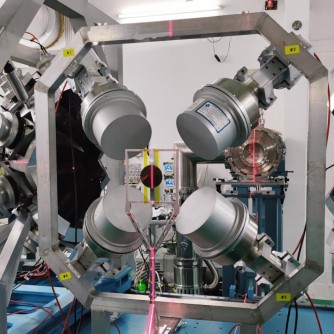Newswise — A study in nuclear astrophysics is published in the journal of Nuclear Science and Techniques, researchers from Sun Yat-sen University, have made a significant contribution in this area with their novel study on neutron capture by bromine, conducted at the China Spallation Neutron Source and provides invaluable insights into both astrophysics and cutting-edge detector design.
At the China Spallation Neutron Source's Back-n facility, researchers harnessed four specialized C6D6 detectors to observe prompt γ-rays from neutron-induced capture events. Leveraging advanced data analysis techniques, such as the pulse-height weighting and double bunch unfolding methods based on Bayesian theory, they ensured meticulous background deductions, normalization, and corrections. The SAMMY code, a multilevel R-matrix Bayesian tool, was central to analyzing the capture yields in the observed energy spectrum, enabling the extraction of resonance parameters. While their results aligned with prior studies, notable discrepancies with certain databases emerged. The TALYS code, grounded in the Hauser–Feshbach statistical emission model, was vital in describing average cross-sections in unresolved resonance regions. The study's pinnacle was calculating the Maxwell average cross sections (MACSs) for bromine isotopes and contrasting them with extant databases and recommended values. Through a combination of precision and advanced methodologies, the team not only deepened the comprehension of neutron capture by bromine but also illuminated broader implications for astrophysics and detector design.
Moreover, these findings are set to shape the design and enhancement of upcoming neutron and γ-ray detectors, advancing the boundaries of nuclear experimentation. This study lays a solid foundation for subsequent investigations, poised to uncover more cosmic mysteries.
###
References
DOI
Original Source URL
https://doi.org/10.1007/s41365-023-01337-6
Funding information
The National Natural Science Foundation of China (U1832182, 11875328, 11761161001, and U2032137)
The Natural Science Foundation of Guangdong Province, China (18zxxt65 and 2022A1515011184)
The Science and Technology Development Fund, Macau SAR (008/2017/AFJ)
The Macao Young Scholars Program of China (AM201907)
The China Postdoctoral Science Foundation (2016LH0045 and 2017M621573)
The Fundamental Research Funds for the Central Universities (22qntd3101 and 2021qntd28)
About Nuclear Science and Techniques
Nuclear Science and Techniques (NST) reports scientific findings, technical advances and important results in the fields of nuclear science and techniques. The aim of this periodical is to stimulate cross-fertilization of knowledge among scientists and engineers working in the fields of nuclear research.
